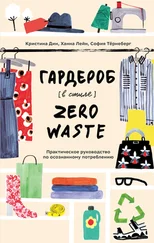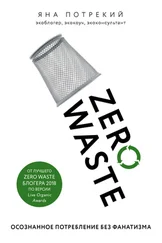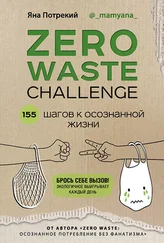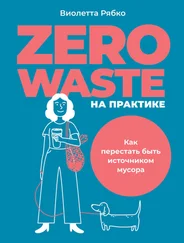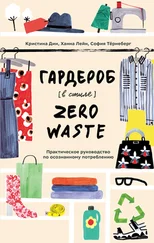 There are food allergies, and there are also food intolerances.
There are food allergies, and there are also food intolerances.
A food allergy occurs when the body’s immune system reacts to certain foods by making antibodies (IgE), and this causes typical allergic symptoms (itching, rashes, hives, swollen lips or tongue, stomach pain, vomiting, diarrhea, wheezing, or trouble breathing).
A food intolerance can cause similar symptoms with digestion but doesn’t cause the immune response. Lactose intolerance (the inability to digest lactose, the sugar in milk), celiac disease (an intolerance to gluten), and Crohn’s disease (an inflammatory bowel disorder that often causes diarrhea) are all examples of food intolerance causes.
Unless you’ve been properly diagnosed by an allergist, there’s no health reason to avoid common allergens. According to the Asthma and Allergy Foundation of America, a small fraction of adults and children (almost 10 percent) have a true food allergy.
So-called plant-based products
Unfortunately, science-based guidelines sometimes get skewed in translation. The current U.S. Dietary Guidelines for Americans (DGA) could be described as “plant-based,” yet they’re sometimes blamed for poor eating habits. These guidelines go through a thorough review process every five years and are science-based. The DGA recommends limiting saturated fat, sugars, and sodium. Beans, lentils, nuts, and seeds are part of the protein foods group. They include dairy and protein foods but emphasize vegetables, fruits, whole grains, and healthy fats.
However, sometimes, small bits of science-based information are used to market foods that may not really be worthy. “Plant-based” is another unregulated front of package label claim. You may see this term used offering the product a “health halo” or suggesting superiority over meat-based foods. For instance, we can say that potato chips and gummy bears are “plant-based,” but this doesn’t mean we should include them as part of our regular dietary plan. But that won’t stop a food company from marketing those types of products to make them appear like a better choice. Read labels closely and think about what the food really is.
 The term plant-based is sometimes used as a marketing term. In some cases, the term is made synonymous with vegan. When I refer to plant-based eating, I’m referring to adding more plant-based whole foods (grains, fruits, vegetables, nuts, legumes, and beans) to your plate, not eliminating all meat products.
The term plant-based is sometimes used as a marketing term. In some cases, the term is made synonymous with vegan. When I refer to plant-based eating, I’m referring to adding more plant-based whole foods (grains, fruits, vegetables, nuts, legumes, and beans) to your plate, not eliminating all meat products.
Another up-and-coming trend is carbon footprint labeling and marketing.
Some emerging groups are promoting that you should lower your carbon footprint. But can carbon footprints really be calculated accurately? Supposed food carbon “calculators” and “quizzes” aren’t verified or standardized. They’re just biased efforts that assign an environmental footprint to foods, based on random assumptions and unproven methods.
At this point in time, there isn’t any science-based formula that can accurately estimate the carbon footprint of each item in the food supply. In addition, we really don’t know whether measuring the carbon footprint of different foods is going to matter, environmentally speaking.
Beef is estimated to emit the largest amount of GHG when compared to other animal proteins like pork, dairy, chicken, and farmed fish. It’s estimated that about half of the emissions from beef are from methane. According to Our World in Data, chocolate and coffee also produce GHG emissions, right behind beef. Still, because beef is often equated with these larger GHG emissions, the beef industry is targeted as a potential way to reduce emissions. It may be a short-sighted solution.
 Every diet has an impact on the environment, as do all our actions. Food, however, also provides nutrition. It’s only recently that the field of nutrition and the environment are more often considered together, rather than separately. Some scientists feel that the environmental footprint should be considered in the context of the nutritional footprint, however. It’s highly likely that the healthiest diets (calorie moderate, low in saturated fat, high in fiber) are those that are both healthy for the body and the planet.
Every diet has an impact on the environment, as do all our actions. Food, however, also provides nutrition. It’s only recently that the field of nutrition and the environment are more often considered together, rather than separately. Some scientists feel that the environmental footprint should be considered in the context of the nutritional footprint, however. It’s highly likely that the healthiest diets (calorie moderate, low in saturated fat, high in fiber) are those that are both healthy for the body and the planet.
 Carbon footprints are determined by measuring “carbon dioxide equivalents.” This unit of measurement was adopted by the Intergovernmental Panel on Climate Change (IPCC). From here, there’s some complicated math involved to quantify the GHG emissions of a product. In terms of say, beef, methane is the GHG; however, methane is a short-lived gas, and quantifying the methane produced by ruminant animals is a little bit tricky. Due to the difference in methane’s shorter lifetime, carbon footprints of foods such as beef or lamb don’t really reflect their long-term impact on temperature.
Carbon footprints are determined by measuring “carbon dioxide equivalents.” This unit of measurement was adopted by the Intergovernmental Panel on Climate Change (IPCC). From here, there’s some complicated math involved to quantify the GHG emissions of a product. In terms of say, beef, methane is the GHG; however, methane is a short-lived gas, and quantifying the methane produced by ruminant animals is a little bit tricky. Due to the difference in methane’s shorter lifetime, carbon footprints of foods such as beef or lamb don’t really reflect their long-term impact on temperature.
Chapter 3
Getting Your Head in the Zero Waste Game
IN THIS CHAPTER
 Taking a look at your current food waste
Taking a look at your current food waste
 Taking steps to reuse more and buy less
Taking steps to reuse more and buy less
 Visualizing a new plan for shopping, cooking, and storing food
Visualizing a new plan for shopping, cooking, and storing food
The benefits of zero waste cooking go beyond the obvious (less food wasted). You’ll also save money, reduce your garbage at home, and feel better about adding less methane to landfills. You may even experience personal health benefits. You may find yourself eating more vegetables at home and ordering smaller portions when you dine out. In addition, your community can benefit from more food donated or otherwise available. Sounds like a win-win situation to me!
The first step to realizing all these benefits of zero waste cooking is to get your head in the game. This chapter helps you process the idea of zero waste and helps you kick-start your journey with some simple strategies that help you plan to use more and waste less.
You find out more about how to reuse food and ingredients in Part 2and you can find inspiration from the recipes in Part 3.
Doing Your Homework: Analyzing Your Food Waste Habits
We’ve all thrown away food. Life gets busy, and sometimes we just go through our daily routine without a second thought. Still, you picked up this book because you’re at least a little concerned about wasting food and its toll not only on your budget but also on the environment. It’s perfectly okay to start small.
The first step to zero waste cooking is to think about what your current food waste habits look like. The following list helps send you in the right direction.
Think about what is in your refrigerator and pantry right now — or heck, go look! Are there items shoved to the back that you forgot about? Do you have stockpiles of certain items, more than you’re likely to use in the next few weeks?
Читать дальше

 There are food allergies, and there are also food intolerances.
There are food allergies, and there are also food intolerances. Carbon footprints are determined by measuring “carbon dioxide equivalents.” This unit of measurement was adopted by the Intergovernmental Panel on Climate Change (IPCC). From here, there’s some complicated math involved to quantify the GHG emissions of a product. In terms of say, beef, methane is the GHG; however, methane is a short-lived gas, and quantifying the methane produced by ruminant animals is a little bit tricky. Due to the difference in methane’s shorter lifetime, carbon footprints of foods such as beef or lamb don’t really reflect their long-term impact on temperature.
Carbon footprints are determined by measuring “carbon dioxide equivalents.” This unit of measurement was adopted by the Intergovernmental Panel on Climate Change (IPCC). From here, there’s some complicated math involved to quantify the GHG emissions of a product. In terms of say, beef, methane is the GHG; however, methane is a short-lived gas, and quantifying the methane produced by ruminant animals is a little bit tricky. Due to the difference in methane’s shorter lifetime, carbon footprints of foods such as beef or lamb don’t really reflect their long-term impact on temperature. Taking a look at your current food waste
Taking a look at your current food waste